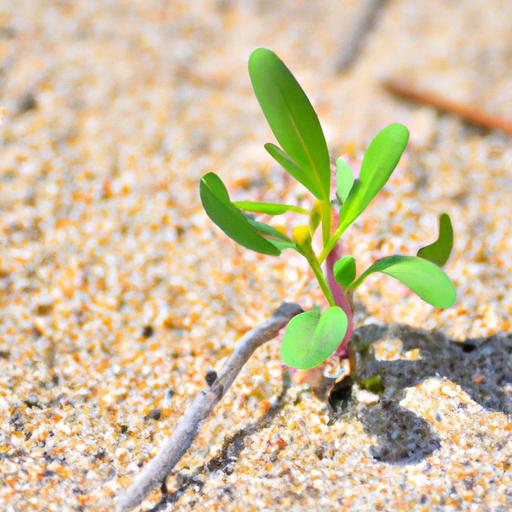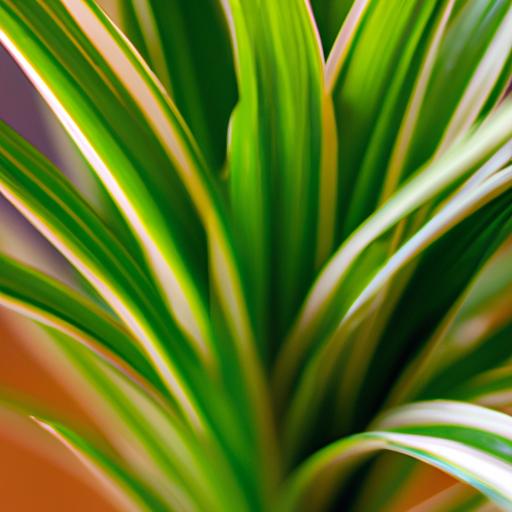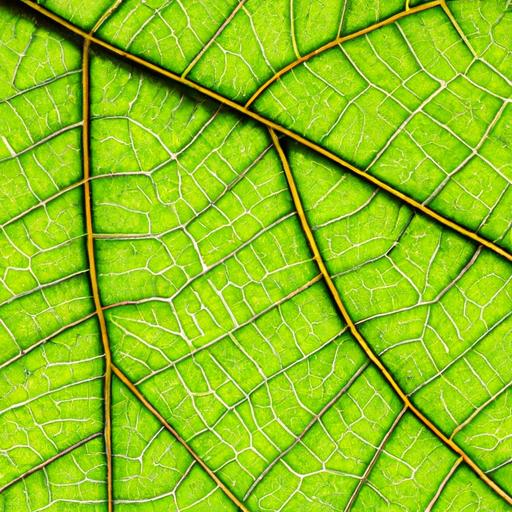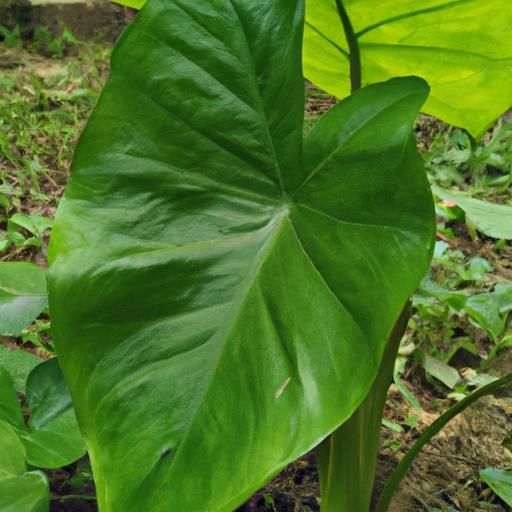Will Plants Grow in Sand? Exploring the Role of Sand in Soil Composition

Introduction
When it comes to cultivating a thriving garden, the type of soil we choose plays a pivotal role in determining the success of our plants. Soil acts as a nurturing medium, providing essential nutrients and a stable foundation for plant growth. Among the various soil types, sand has gained significant attention due to its unique characteristics. But the question remains: will plants grow in sand? Let’s delve into the importance of soil for plant growth and understand the role sand plays in soil composition.
Importance of Soil for Plant Growth
Soil serves as the lifeblood of plants, providing them with vital nutrients, water, and oxygen. It acts as a reservoir, storing and releasing these elements as needed. The composition of soil greatly influences the availability of nutrients, the retention of moisture, and the overall health of plants. Different plants thrive in different soil types, and understanding the suitability of sand for plant growth is crucial.
The Role of Sand in Soil Composition
Sand, characterized by its larger particles and gritty texture, contributes to the overall composition of soil. It is one of the primary components alongside silt and clay. While sand may not retain moisture as well as other soil types, it offers unique benefits. Its coarse texture allows for excellent drainage, preventing waterlogging and root rot. Additionally, sand promotes aeration, ensuring that plant roots receive ample oxygen. However, due to its low nutrient-holding capacity, growing plants solely in sand may present certain challenges.
In the subsequent sections, we will explore the characteristics of sandy soil, factors affecting plant growth in sand, methods to enhance plant growth in sandy soils, and best practices for growing plants in sand. So, let’s uncover the secrets to cultivating a thriving garden in sandy soil.
Understanding Sand as a Growing Medium
A. Characteristics of Sandy Soil
When it comes to sandy soil, certain distinctive qualities set it apart from other soil types. Its texture, primarily composed of larger particles, grants it a gritty and loose structure. This loose structure allows for excellent drainage, preventing water from accumulating around the plant roots. However, it also means that sandy soil has a lower water-holding capacity, making it prone to drying out quickly.
B. Nutrient Availability in Sand
One of the challenges faced when growing plants in sandy soil is its relatively low nutrient-holding capacity. Sandy soil tends to have fewer essential nutrients compared to loamy or clayey soil. Nutrients, such as nitrogen, phosphorus, and potassium, may be easily leached away due to the rapid drainage in sandy soil. Consequently, it’s crucial to address this limitation by providing additional nutrients to sustain healthy plant growth.
C. Water Retention Capabilities of Sand
The water retention capabilities of sandy soil are a crucial factor to consider when growing plants. Due to its coarse texture, sand does not retain moisture as effectively as other soil types. Water tends to filter through the particles quickly, making it challenging for plants to access a consistent water supply. However, this characteristic can be beneficial in preventing waterlogged conditions that can suffocate plant roots. Proper watering techniques and amendments can help improve the water retention capabilities of sandy soil, ensuring plants receive adequate moisture for growth.
Understanding the unique characteristics of sandy soil, including its loose structure, low nutrient-holding capacity, and water drainage capabilities, is vital in successfully cultivating plants in this medium. In the following sections, we will explore the factors that affect plant growth in sand and discover how to enhance plant growth in sandy soils. Let’s unlock the secrets to flourishing gardens in even the most challenging of environments.
Factors Affecting Plant Growth in Sand
Types of Plants Suitable for Sandy Soil
When it comes to planting in sandy soil, certain plant varieties are better suited to thrive in these conditions. Native plant species that naturally grow in sandy environments have adapted to the unique characteristics of this soil type. They possess traits that enable them to withstand the challenges posed by sandy soil, such as low nutrient content and rapid drainage. Examples of plants suitable for sandy soil include beach grasses, cacti, succulents, and certain wildflowers. These plants have evolved to extract nutrients efficiently and tolerate drought-like conditions.
Adaptations of Plants to Grow in Sand
Plants that successfully grow in sandy soil have developed remarkable adaptations to overcome the limitations of this challenging medium. Their roots often extend deeper into the ground to access water and nutrients beyond the top layer of sand. Some plants have evolved extensive root systems that spread wider to maximize nutrient uptake from the surrounding soil. Additionally, certain plant species have developed mechanisms to minimize water loss through reduced leaf surface area or waxy coatings, enabling them to survive in sandy environments with limited moisture.
Common Challenges for Plants in Sandy Environments
While some plants thrive in sandy soil, it is important to acknowledge the common challenges they face in such environments. Sandy soil tends to have low nutrient content, as its coarse texture does not retain organic matter effectively. This can lead to nutrient deficiencies in plants, impacting their growth and overall health. In addition, sandy soil’s excellent drainage properties can cause rapid water loss, resulting in dry conditions that can be detrimental to plant survival. Managing moisture levels and providing adequate nutrients are crucial aspects of cultivating plants in sandy environments.
By understanding the types of plants suitable for sandy soil, their adaptations to grow in these conditions, and the challenges they face, we can better equip ourselves to successfully cultivate a garden in sandy environments. In the following sections, we will explore techniques to enhance plant growth in sandy soils and best practices for growing plants in sand. Let’s unlock the secrets to thriving gardens in the face of sandy challenges.
Enhancing Plant Growth in Sandy Soils
A. Soil Amendments for Improving Nutrient Content
In sandy soils, the nutrient content can be quite low, posing a challenge for plant growth. However, there are several soil amendments that can improve the nutrient availability and support healthy plant development. One such amendment is compost. Incorporating organic compost into sandy soil enriches it with essential nutrients, such as nitrogen, phosphorus, and potassium. Compost also enhances the soil structure, allowing for better water and nutrient retention. Another effective soil amendment is well-rotted manure, which not only adds nutrients but also improves the soil’s ability to retain moisture.
B. Organic Matter and Its Benefits in Sandy Soil
Introducing organic matter into sandy soil is crucial for its long-term fertility and plant growth. Organic matter acts as a sponge, improving the water-holding capacity of sandy soils and reducing the risk of drought stress. It also enhances soil structure, promoting better root penetration and nutrient absorption. Incorporating organic matter, such as leaf litter, grass clippings, or shredded bark, into sandy soils can significantly improve their quality and fertility over time. By continuously adding organic matter, you can transform your sandy soil into a nutrient-rich and moisture-retentive environment for thriving plants.
C. Techniques for Enhancing Water Retention in Sand
One of the main challenges of growing plants in sandy soil is water retention. Due to its coarse texture, sand drains quickly, making it difficult for plants to access water during dry periods. However, there are techniques you can employ to enhance water retention and ensure your plants receive adequate moisture. One method is the addition of mulch. Applying a layer of organic mulch, such as wood chips or straw, around your plants helps conserve soil moisture by reducing evaporation and suppressing weed growth. Another technique is drip irrigation, which delivers water directly to the plant roots, minimizing water loss through evaporation and ensuring efficient water usage.
By utilizing soil amendments, incorporating organic matter, and employing water retention techniques, you can enhance plant growth in sandy soils. These strategies not only improve the nutrient content and water-holding capacity of the soil but also create a favorable environment for your plants to thrive. Now, let’s move on to the best practices for growing plants in sandy soil and explore the suitable plant varieties for this unique environment.
Best Practices for Growing Plants in Sand
Choosing the Right Plant Varieties for Sandy Soil
When it comes to cultivating plants in sandy soil, choosing the right plant varieties is crucial for successful growth. Certain plants have evolved to thrive in sandy environments, adapting to the specific challenges posed by low-nutrient and well-draining soil. Look for plant species that are known to be tolerant of sandy conditions. Drought-resistant plants like succulents, cacti, lavender, and yarrow are excellent choices, as they can withstand sandy soil’s fast-draining nature. Native plants adapted to your region’s sandy habitats are also worth considering, as they have naturally acclimated to the local environment.
Proper Watering Techniques for Sandy Environments
Watering techniques play a vital role in the success of plant growth in sandy environments. Due to its quick-draining nature, sandy soil requires a slightly different approach to watering compared to other soil types. Frequent, but shallow watering is key to nourishing plants in sand-based gardens. Instead of heavy, infrequent watering, which can cause water to run off quickly, aim for more frequent watering sessions. This allows the water to penetrate deeply into the soil, reaching the plant’s root zone. Mulching the soil surface can also help retain moisture and reduce evaporation, aiding in water conservation.
Importance of Mulching in Sand-Based Gardens
Mulching is a valuable practice for gardeners cultivating plants in sand-based gardens. By applying a layer of organic mulch, such as wood chips, straw, or compost, you can provide numerous benefits to your plants. Mulch acts as a protective barrier, shielding the soil from extreme temperatures and reducing moisture evaporation. Furthermore, it helps to suppress weed growth, preventing competition for nutrients and water. Organic mulch also gradually breaks down, enriching the soil with organic matter, which improves its fertility over time. When mulching your sandy soil garden, ensure a layer of mulch around 2-3 inches thick, taking care to leave a gap around the plant stems to prevent rot.
By following these best practices, you can create an environment that fosters healthy plant growth in sandy soil. Choose suitable plant varieties, adopt proper watering techniques, and embrace the benefits of mulching to ensure your sand-based garden thrives with vibrant blooms and lush foliage.
Conclusion
In conclusion, the question of whether plants can grow in sand has been thoroughly examined. While sandy soil presents its own set of challenges, it is possible to cultivate a flourishing garden in this medium with the right approach.
Understanding the importance of soil for plant growth is essential. Soil acts as a vital source of nutrients, water, and oxygen for plants, and its composition greatly impacts their overall health and development. Sand, with its coarse texture and excellent drainage capabilities, plays a unique role in soil composition.
To successfully grow plants in sandy soil, it is crucial to consider several factors. Selecting plant varieties that are well-suited for sandy environments can greatly increase the chances of success. Additionally, incorporating organic matter and soil amendments can improve nutrient content and water retention in sandy soils.
Proper watering techniques, such as deep but infrequent watering, are vital to help plants establish strong root systems in sandy soil. Mulching, on the other hand, can aid in moisture retention and weed suppression.
While growing plants in sand may present some challenges, with the right knowledge and techniques, you can create a thriving garden. Embrace the unique characteristics of sandy soil and adapt your gardening practices accordingly. With perseverance and a touch of green thumb, you’ll witness the beauty and resilience of plants thriving in sand.
So, don’t let the sandy soil discourage you. Embrace the opportunity to create a unique garden that showcases the wonders of nature’s adaptability. Happy gardening!
Remember, fostering a rich and informative environment is key to engaging readers and boosting your website’s SEO. By providing valuable insights and actionable tips, you can establish yourself as an authority in the field and gain the trust of your audience. So, go ahead and share your newfound knowledge about growing plants in sand with others who share your passion for gardening.
Conclusion: So above is the Will Plants Grow in Sand? Exploring the Role of Sand in Soil Composition article. Hopefully with this article you can help you in life, always follow and read our good articles on the website: plants.123didulich.com




